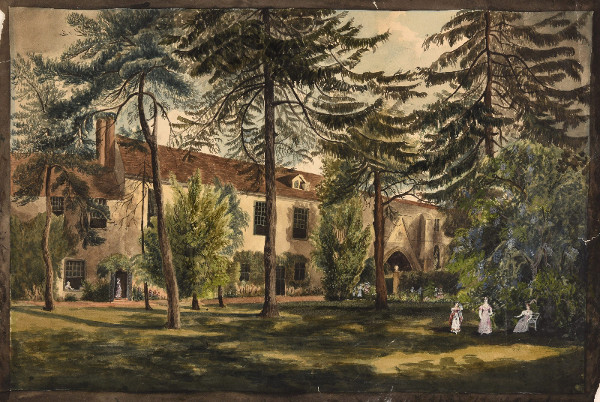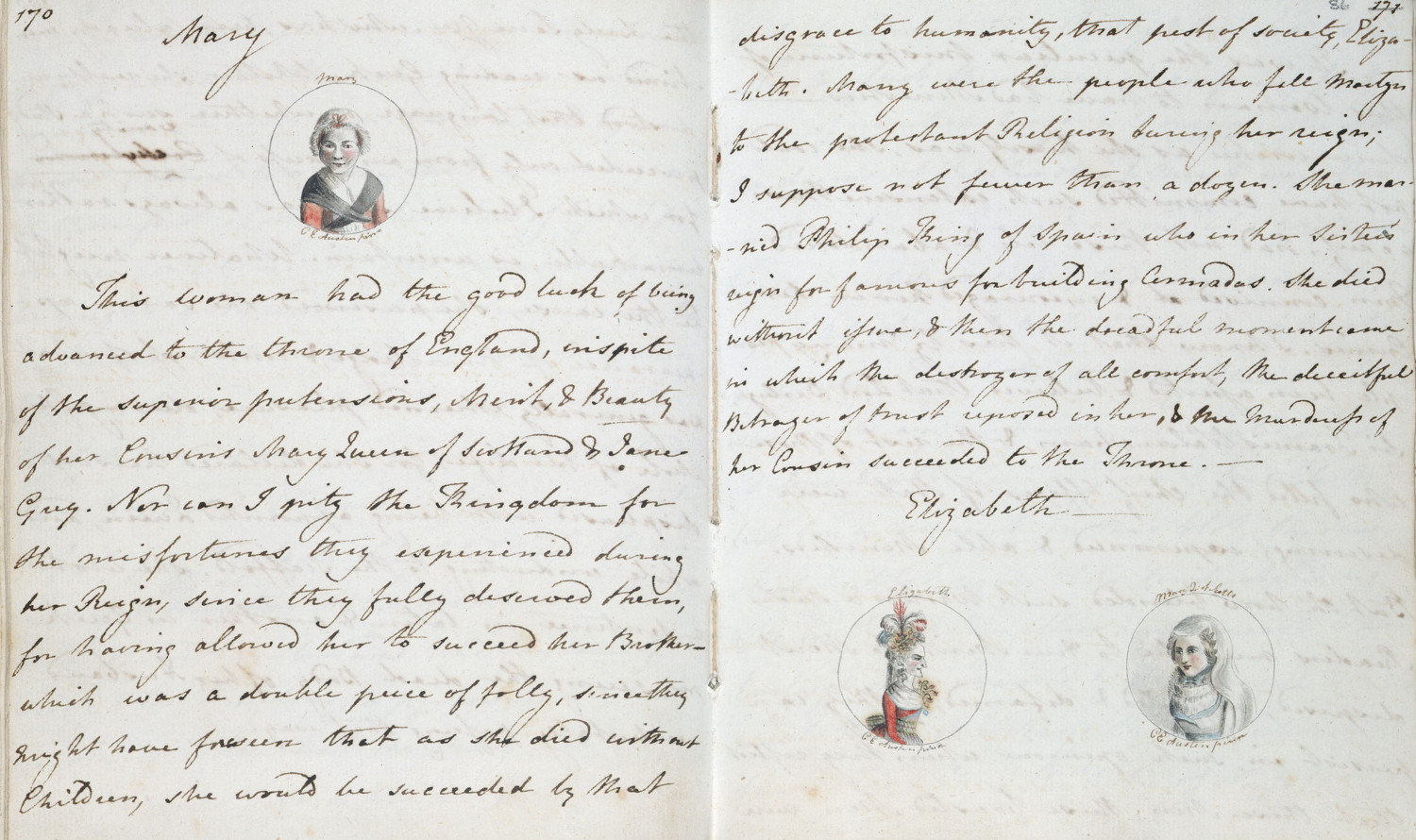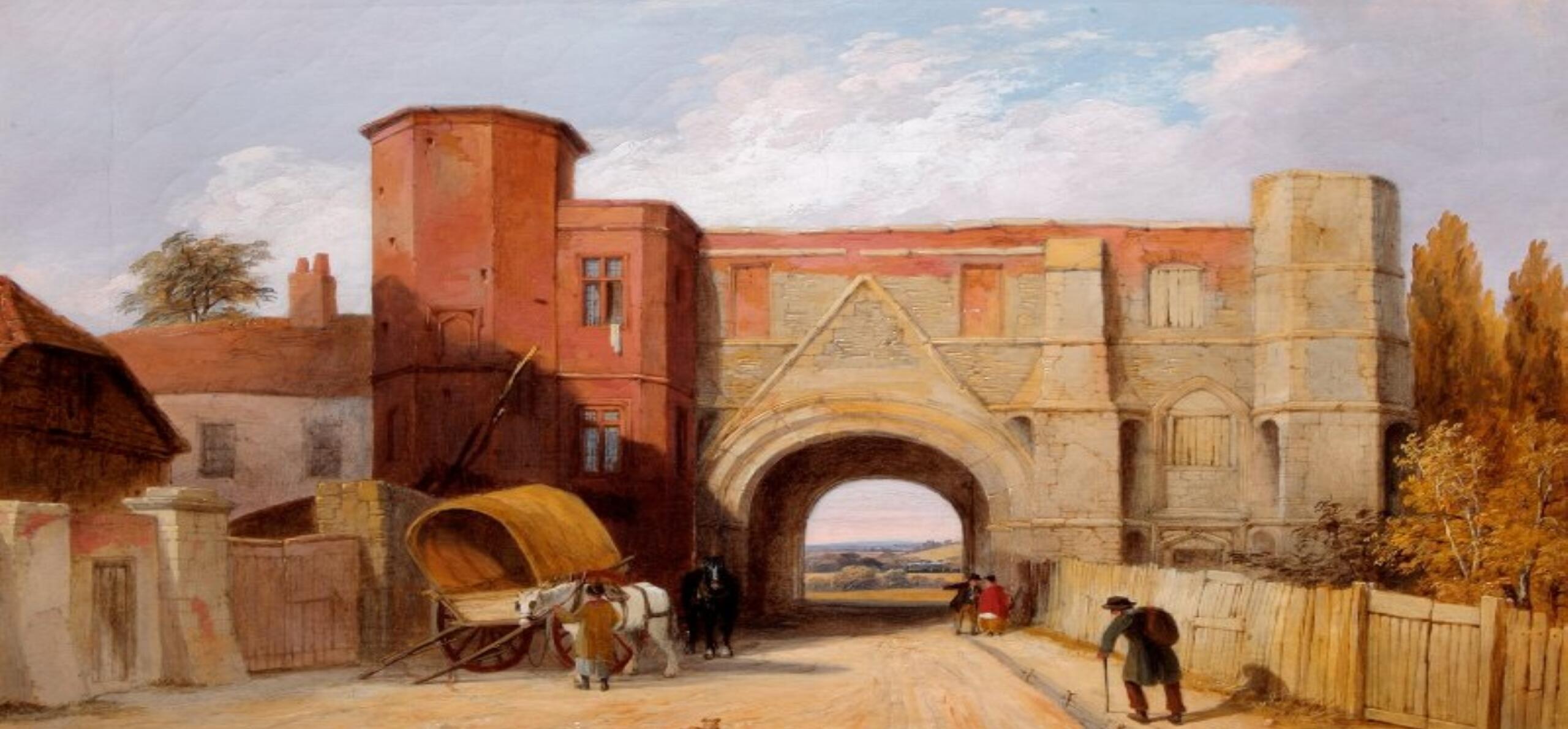Joy Pibworth, Jane Austen Society
Jane Austen spent 18 months at school in Reading between the summer of 1785 and December 1786. The school was located at the historic Abbey Gateway, now cared for by Reading Museum. As education was not compulsory for girls nor boys, it is interesting to know why Jane was sent away to school and why Reading Ladies Boarding School was chosen.
Jane was fortunate to have been born into a family where education was highly prized, in its own right, but also as a means of earning a living.
Her mother Cassandra Leigh came from the academic and intellectual, though not wealthy, branch of the aristocratic and affluent Leigh family. They were based in Gloucestershire and Warwickshire. At the age of six her uncle Theophilus Leigh, Master of Balliol College in Oxford, visited her home in Harpsden near Henley. He noted that she was already ‘the poet of the family’ and that she had entertained him with several ‘Smart pieces promising a great genius’ (wrong generation but his prophecy was correct!).
Jane’s father George Austen grew up in Kent. Orphaned at the age of five, George was indebted to his Kent relations, in particular Uncle Francis, who took him in and entered him into Tonbridge School. George studied with great diligence and success until at 16 he was awarded a fellowship at St John’s College, Oxford. This place was reserved for a pupil from that school under an endowment from Sir Thomas White (born in Reading in 1492 whose role in the shaping of George, and subsequently, Jane Austen must be considered crucial). George, endowed with outstanding ability and the necessity to make his own way in the world, attained several positions within the university and also back in Kent. However at that time Fellows were obliged to resign from the University when they married. Therefore his engagement and marriage to Cassandra Leigh in 1764 resulted in him leaving the University, taking Holy Orders and settling in the Hampshire parish of Steventon, where he would reside until 1801.
By the 1780s Steventon Parsonage was home to Mr and Mrs Austen, their 6 sons and 2 daughters as well as pupils living with them whom George Austen tutored for Oxford entrance. Mr Austen had sufficient income to consider sending his two girls away to school.

The Abbey School, Reading. c.1790 (REDMG : 1931.99.1). You can see how it occupied part of the Abbey Gateway.
In 1783 Cassandra and Jane at the respective ages of 10 and 7 went with their cousin Jane Cooper, aged 12, to Oxford where Jane Cooper’s widowed aunt Mrs Cawley was to arrange tutors for them. Later that year Mrs Cawley moved them to Southampton which was a hub of military activity as troops from the wars with the French and the Americans returned, many infected with putrid sore throat (typhus). Both Jane and Cassandra succumbed to the disease yet Mrs Cawley refused to inform the two families. However Jane Cooper wrote home and their mothers arrived without delay. Tragically Mrs Austen’s sister Mrs Cooper, died of the fever although the girls recovered. This was a devastating blow for the entire family. Especially for Rev Dr Edward Cooper, who had moved back to his home territory of the Henley/Reading area. He assumed the position of Rector of Sonning from where he sent his son, also named Edward, to Eton.
It was decided that the two older cousins should go to school again and in spite of there being schools nearer to Steventon and cheaper, Reading Ladies Boarding School was chosen. Its good reputation for education was well-known, in particular, for the daughters of clergymen. The fact that its situation in the Forbury, considered to be a particularly healthy spot, was also only a couple of miles from Sonning must have been a decisive factor for Rev Dr Cooper. Mrs Austen’s brother James Leigh Perrot also lived in nearby Wargrave.
Jane was too young to make her going to school at all necessary... (but) she would go with Cassandra; if Cassandra’s head had been going to be cut off Jane would have hers cut off too.
- Mrs Austen
Mr Austen paid £37 19s per girl per half year. This probably included board, tuition, washing, materials and dancing lessons, as was the norm.
So the three cousins came to school in Reading in July 1785. Jane mentions her school days only once in her letters, ‘I could die of laughter at it as they used to say at School’ but it is widely thought that when she describes Mrs Goddard’s School in Emma she is recalling her own school: ‘a real old-fashioned Boarding school, where a reasonable quantity of accomplishments were sold at a reasonable price, and where girls might be sent to be out of the way and scramble themselves into a little education, without any danger of coming back prodigies’.
Unfortunately this educational idyll came to an end in December 1786: much of Mr Austen’s income derived from his farm and an exceptionally harsh winter followed by late frosts and devastating blight severely affected his income. Consequently the girls had to leave school at the end of the term.
We will never know how much Jane was influenced by her short time in Reading. However within months the twelve year old Jane was writing seriously.

Jane Austen's 'The History of England', written shortly after her time in Reading (British Library)





